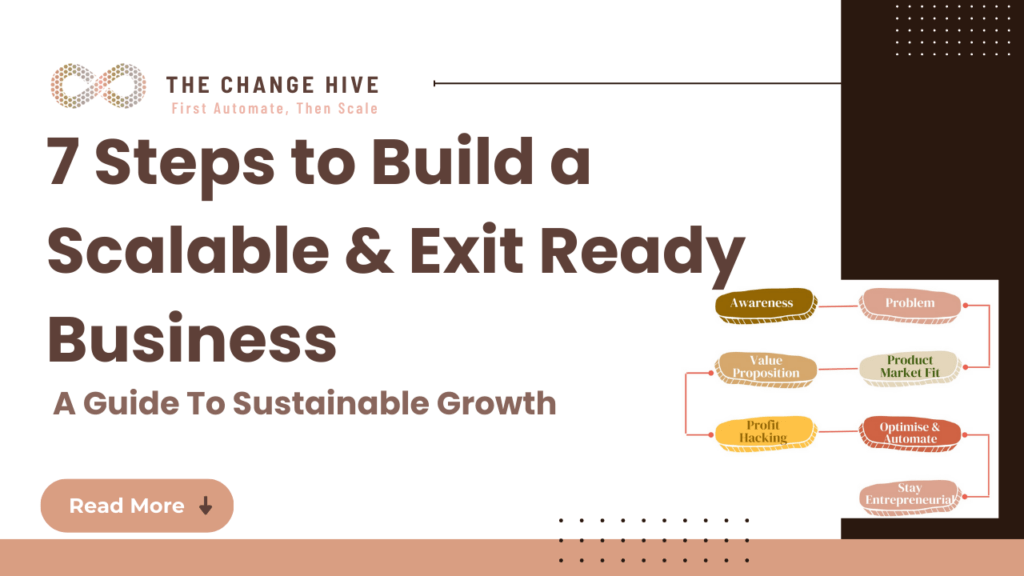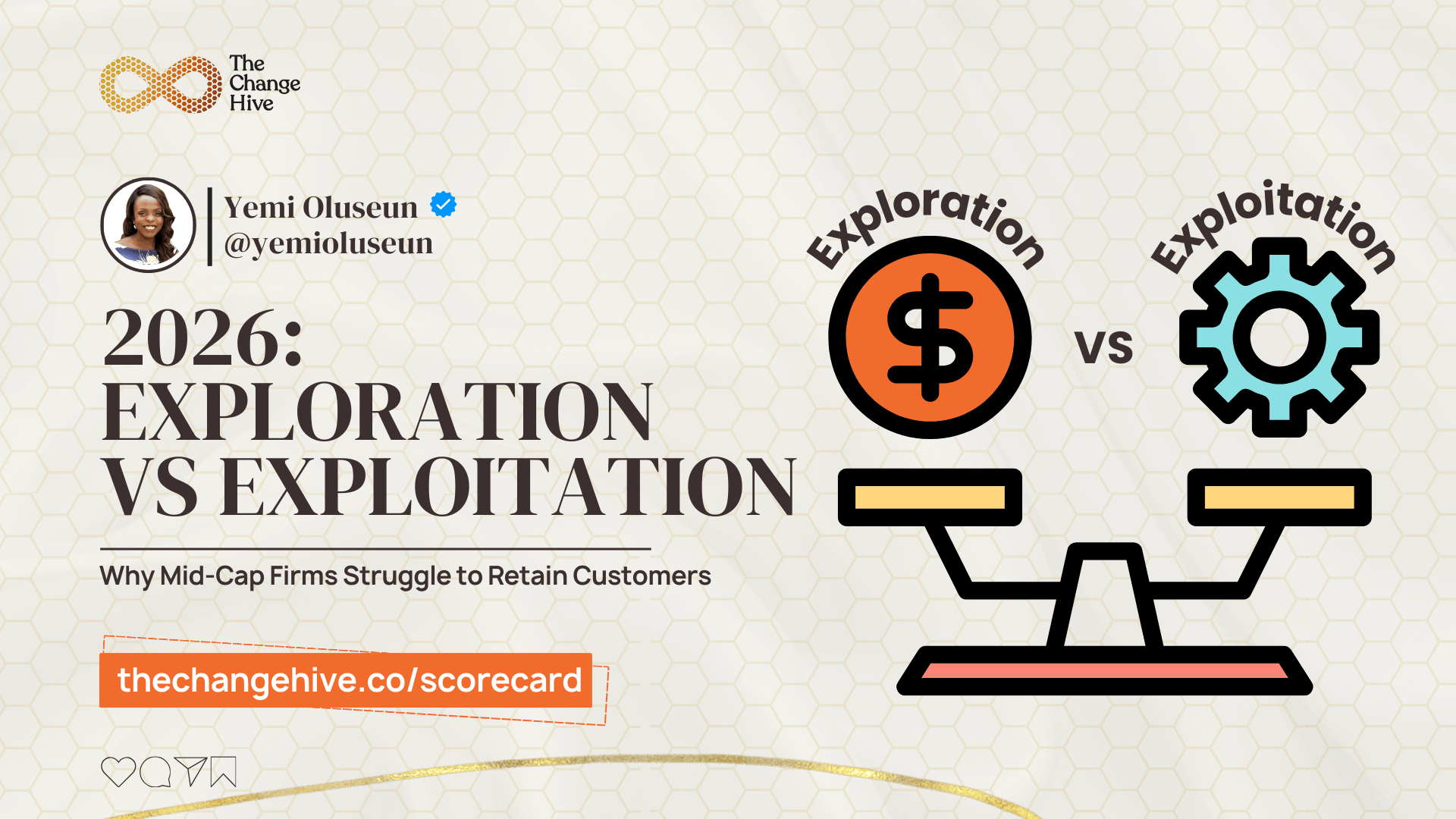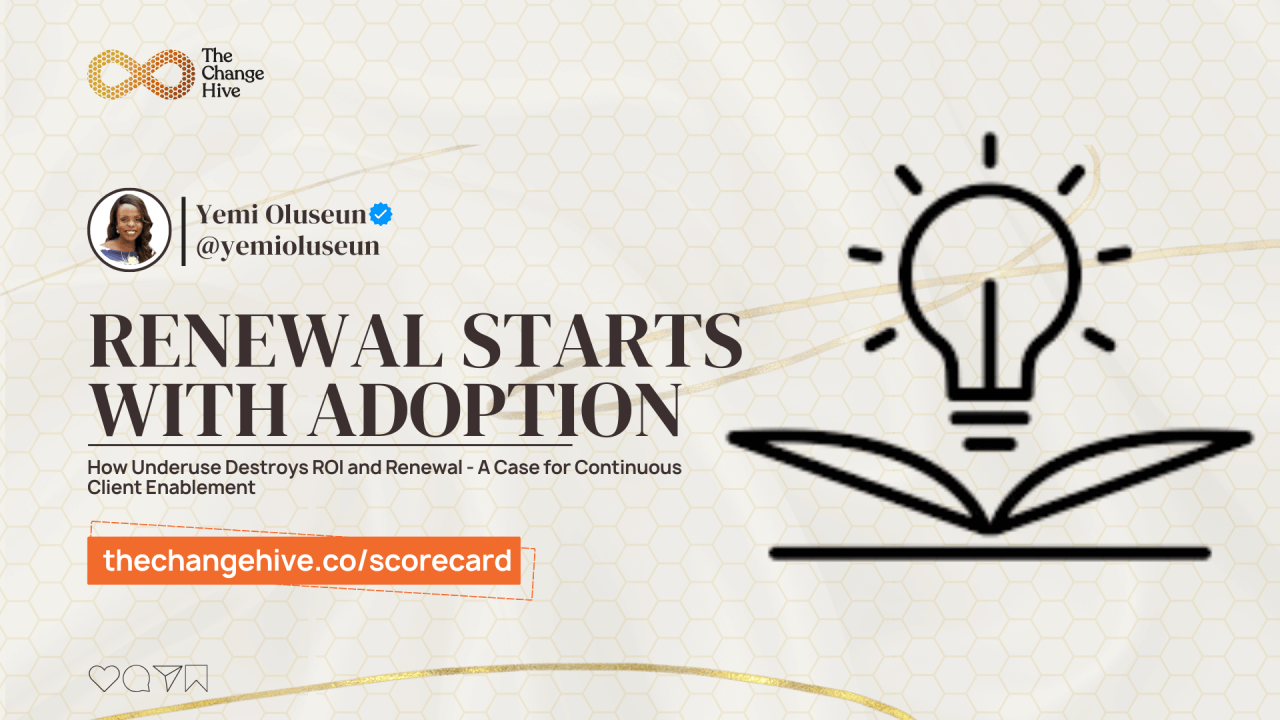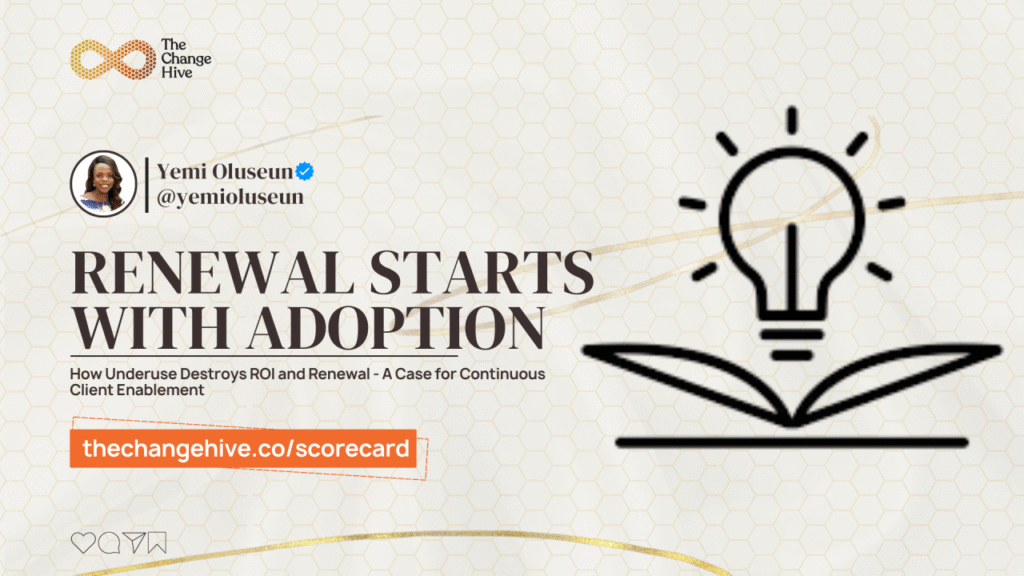Over the last three months, I have helped 100+ entrepreneurs & business owners with growth and innovation.
Here is what I have learnt…
There are 7 Main Steps to Building a Scalable & Exit Ready Business

1) Awareness (Self & Business)
This step is often perceived as intangible, so unfortunately overlooked, yet it is foundational.
Knowledge of the founder & founding team’s strengths, weaknesses, personality and working style preferences helps craft growth strategies that best align with the team. It also helps proactively identify and manage skill gaps.
I find tools like MBTI, Career Anchors, Ikigai, and the Saboteur Assessment great starting points.
Secondly, clearly defining the company’s vision, mission, and values helps with decision-making, shaping culture, attracting & repelling the right stakeholders, defining actionable OKRs etc.

2) Clear Problem/ Opportunity Statement
This step has four key tasks:
- succinctly describe the opportunity in layman’s terms
- determine how big the market is,
- select the potential target market(s), and
- perform high-level business environment and market analysis to ensure timing & opportunity is right for entry.
3) Crafting an Offer/ Value Proposition
I find Alex Hormozi’s value framework the most helpful.

A good value proposition ideally has some or all of these four components:
1. Achieve Dream Outcome (typically aligned to wealth, love, health or time)
With
2. High Likelihood of Achievement (money back, testimonials, accreditations etc.)
in a
3. Reasonably Fast Time
with
4. Minimal Effort/ Sacrifice
For example
- Instead of: 6-week career coaching (Features)
- Try: Get a 6 figure job in 6 weeks in 6 interviews or less or your money back (Value, Outcome focused)
4) Finding Product Market Fit
There are three goals here:
- To confirm you have the right market, i.e. your target audience cares about the problem.
- To confirm that your solution is clear and adequately addresses the problem.
- You have a repeatable sales process.
This step requires a lot of trial and error, MVP iterations, running A/B tests etc.
It is advisable to follow Paul Graham of Y Combinator’s advice at this stage: do things that do not scale.
Why?
So you understand the customer well, overdeliver and acquire committed early adopters and product evangelists.
5) Profit Hacking
Once you have product-market fit, it is time to scale.
At this stage, designing a robust customer journey workflow that helps ensure a healthy pipeline of leads and maximises the lifetime value of customers is the focus.
Workflow should cater for: Brand Awareness > Nurturing > Conversion > Delivery > Retention > Offboarding.

6) Optimise & Automate
Very often, fast growth comes with accumulated inefficiencies and technical debt.
When not addressed, an increase in customers leads to an increase in cost that outweighs any revenue gained.
Improving unit economics and eliminating key person dependencies is the focus here.
7) Staying Entrepreneurial
To ensure the business does not enter into decline, the founding team/ CEO may, at this point, choose to keep growing by:
- Creating New Adjacent Product
- Entering New Markets
- Explore IPOs
- Look to get acquired or merge with a related company.
Please Help Me: I am considering running a LinkedIn event on this topic in the coming weeks; please let me know if you think this is helpful.
#fintech #saas #growth #digitaltransformation #marketingautomation #innovation #productmarketfit #earlystage #smallbusiness #intrapreneur







